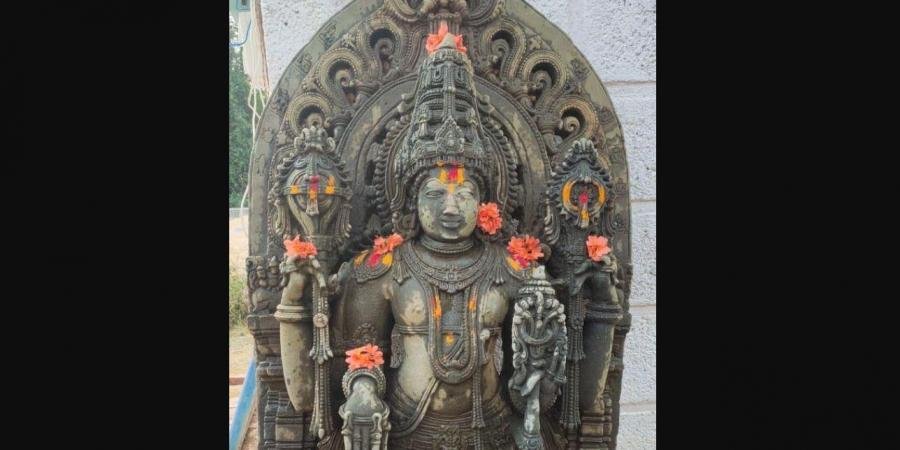12th Century Channakeshava Idol Found While Sand Mining At Hale Belur, Karnataka


An extremely rare idol resembling the famous Channakeshava of Hoysala temple at Belur has been found recently during sand mining at Hale Belur in Sakleshpur taluk, Karnataka. The local villagers noticed the idol when the earthmover used for sand mining on the bank of river Hemavati hit the idol inadvertently.
As the news spread the local villagers gathered and carefully extracted the idol and placed it in front of the temple at their village.
The beautiful idol is 4.5 feet tall and said to be from 12th Century, the period when the famous grand Hoysala temples were built.
The local villagers have started offering prayers to the idol installed in front of their temple in the village. The villagers have urged the Archaeology department officials to give them permission to keep the idol inside the temple.
Sidegowda, the village head reportedly stated that, Channakeshava Temple was also constructed in Hale Belur during the Hoysala dynasty. But there remains a mystery about why there are two idols – one in the temple and the other buried underground.
The village head suggested that the idol now found may have been damaged while carving and therefore perhaps abandoned. Another new Channakeshava idol was perhaps made and installed inside the temple.

Kumar H.C., the curator of the Archaeology Museum in Hassan, visited the spot and said the idol had been kept in the premises of the Channakeshava temple, which is being renovated. “Barring minor dents, the idol is in good condition. I will submit a report to the Director of Museums about the idol and seek his directions for preserving it”, he told the media.
The curator has appealed to the villagers to hand the idol over to the museum. He reportedly said, “As broken idols cannot be worshipped, I have appealed them to hand it over. At present, it would remain in the village. The villagers have kept it in a secure place”.
Hindu temples and rare idols have been taken over by the government under the pretext of preserving the ancient temple sculptures or mismanagement by traditional temple administrators. After the government takes over these ancient temples, they fall into ruin and the properties of the temple land, etc are given away in pittance to other private bodies or for “secular” use by other government agencies. The temple funds are also mismanaged by the government administrators heading these temples’ management.
Many rare idols and temple jewellery are stolen from the temple under the watch of government. While crores of money is spent to pay the government officials managing the temples from the temple funds, pittance ranging from Rs.50 to Rs. 350 id paid to temple priests, making it impossible for the priests to run their family from temple salary. This has prompted many traditional priest families to move away to jobs which can feed their families.
Ancient Hindu temple supported traditional Vedic studies, promotion of classical dance and music, which is completely lost now with the temples being taken over by the government. A secular government has no business to run Hindu temples when it assiduously keeps away from interfering with Christian and Muslim religious establishments.
The new idol found in Hale Belur should not be taken over by the Archaeology department as Hindus have a right to worship their Gods, moreover in all probability the idol might be “stolen” by the idol smugglers and may land up for auction sale at Sotheby’s in New York.
News Source: Free Press Journal
Images sourced from Organiser and New Indian Express.
DISCLAIMER: The author is solely responsible for the views expressed in this article. The author carries the responsibility for citing and/or licensing of images utilized within the text.
